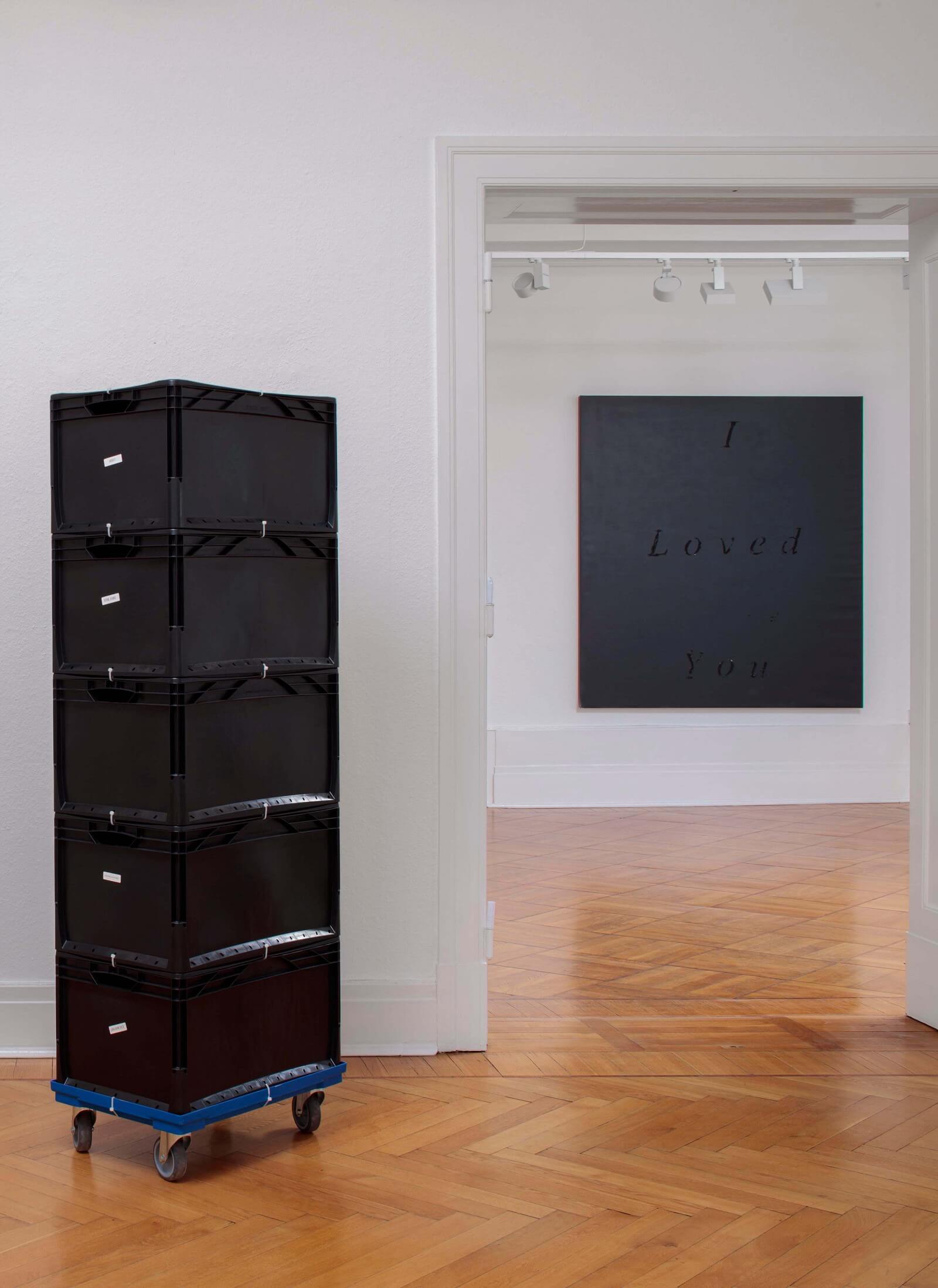Richie Culver & Umut Yasat
The Path of Least Resistance
Contemporary artistic practices are madly manifold, arguably as diverse as the world. Nowadays, a plethora of materials, forms, problems, and a whole gradient of affections are mobilized by artists virtually everywhere. Still, it is possible to find some guidelines—premises, preoccupations, or patterns that might transpire for the attentive observer. Artists exploiting distinctive working strategies or seeking different aesthetic impacts can eventually converge toward common theoretical concerns. What the materials divide, the matters unify. One of these guidelines, present in art possibly since its dawn, is the question of time. Time’s tragic inexorability, time’s cosmic indifference to our pitiful aspirations, and especially time’s formless nature. “What then is time?” Saint Augustine famously wondered, only to later walk away with a paradox: “Provided that no one asks me, I know. If I want to explain it to an inquirer, I do not know.” It is still open to debate whether anyone has a definitive awareness of what time is or is not. While answers may be disputed, our assortment of questions is more comprehensive than ever. And art proves an indispensable collaborator in mapping such interrogations.
What then is time? Bringing together Richie Culver and Umut Yasat for the first time, this duo exhibition at GNYP Gallery Berlin deepens this immemorial question and adds many others to the mix. At first sight, the contrast between the two artists in this show could not be bigger. But so are the questions they are formulating. Take Culver’s canvases, for instance: intensive painterly gestures that, despite their vehemence, sometimes can barely record the scribbles on their surface. The letters fade, the organization of the sentences dwindles, the ink stains get in the way of the message. It is as though it was all made in a hurry. What does it all mean? Here, we might encounter both ordinary slogans and metaphysical interrogations, always somehow provocative. Always sharing the same symbolic level in the shelves of worldly values made equivalent by the contemporary dynamic that standardizes everything.
The abolition of the division between the public and the private in these works, moreover, is patent. Besides painting with oil—a technique charged with a specific grammar and tradition in the art historical discourse—Culver, who was born in 1979 in the United Kingdom, also uses stencils, a practice associated with urban, public spaces. A paradox is at hand. The message in his works betrays their private leaning, for we encounter marriage vows fixated in the middle of painterly cacophonies. What the method suggests, the message contradicts. Therefore, while we are confronted with a technique that adorns our metropolitan landscapes, the pledges made to consummate private unions redirect our attention to the inner domain of worldly affairs. The cities’ beat is decelerated by the rhythm of the eternal promises. The daily noise is confronted with the whispers addressed for the ever after (or till death do us part).
The equation here is simple. The clash of different time registers—public and private, canonical and conventional—coalesces in Culver’s canvases. What comes out of it, though, is anyone else’s guess; the time we need to see these works and the time we need to comprehend them is different. What does that tell us about our economy of attention?
Umut Yasat, in turn, approaches the matter of time and the dynamic between the public and the private via a different set of tactics, which raises other questions and problems as well. While in Culver we perceive an almost direct affiliation between the way he works and the results he achieves, Yasat’s outcome, on the other hand, tells us nothing about his process—specifically, about the time he spends in each individual work. What do we see when we look at his strange sculptures?
“Der Stapel” (always in singular form) is an ongoing project initiated in 2014 and intended by the artist, born in 1988 in Germany, to last until the end of his life. Composed of objects he finds all around him—items that, in general, were “part of his life” at some point, from drawers and mattresses to bottles and cigarette packs—these totemic structures are formed by both things filled with personal feelings and completely trivial leftovers. Only by adding them to the whole are the parts symbolically activated, granted a new breadth. Moreover, a set of parameters are assembled to account for Yasat’s intentions. Each segmented by a number, Der Stapel are limited by the artist’s height and controlled by a series of calculations to render them mobile. On a personal level, they are testimonies to his habits at a given time and also, on a broader level, testimonies to what the world makes available.
Yet all of these self-imposed rules started to feel too rigid, contradicting Yasat’s compromise with the dynamic nature of time. These new Der Stapel presented at this exhibition, then, are more open to transformations. Now, as with Der Stapel 67, a parachute can be deployed; in Der Stapel 87, we see balloons mounted on a trolley. Despite their ludic character, these new stacks attest to a more visible, tangible emblem of the passing of time. In a way, they are time itself. What we see today will—evidently—be changed by tomorrow.
João Gabriel Rizek

